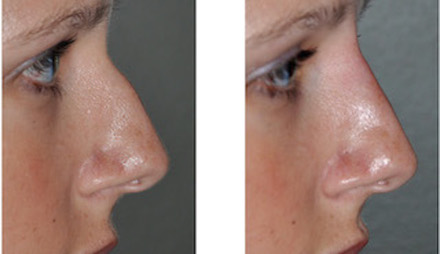
In the February 2019 issue of the journal Plastic and Reconstructive Surgery an article was published entitled ‘Nonsurgical Rhinoplasty: Nasal Grid Analysis and Nasal Injecting Protocol’. In this clinical paper the authors review their experience in 150 consecutive patients over a nearly four year period of undergoing injectable filler treatments to the nose. As a result they present a customized protocol for injecting the nose with the aid of a nasal grid to achieve consistent and safe aesthetic outcomes.
A hyaluronic-based filler with local anesthetic mixed in was used in all patients. They followed the following steps:
- Pre-injection alcohol nasal skin prep
- Strict midline injections were done with initial aspiration using a 27 gauge needle
- Supraperiosteal injection at the nasal bridge and dorsum as well as nasal spine
- Deep dermal injection at the nasal tip
- Slow injection of volume observing for skin blanching
- Smoorhing massage after each injection to avoid lumps
Using thus technique they report a low complication rate of use under 2% of which the most common was hematoma and bruising. No cases of skin necrosis/loss occurred.
Injectable fillers can be expected to last 8 to 12 months in the nose. Although this will have some variability based on the viscosity of hyaluronic filler used.
They also discussed the treatment protocol if skin blanching does not go away promptly or skin necrosis occurs. The immediate injection of hyaluronidase, 300 to 1500IU, every 2 to 4 hours is recommended to dissolve the filler.
For properly selected patients, injectable rhinoplasty can be safe and effective with a low risk of complications following basic guidelines presented in this paper.
Dr. Barry Eppley
Indianapolis, Indiana



